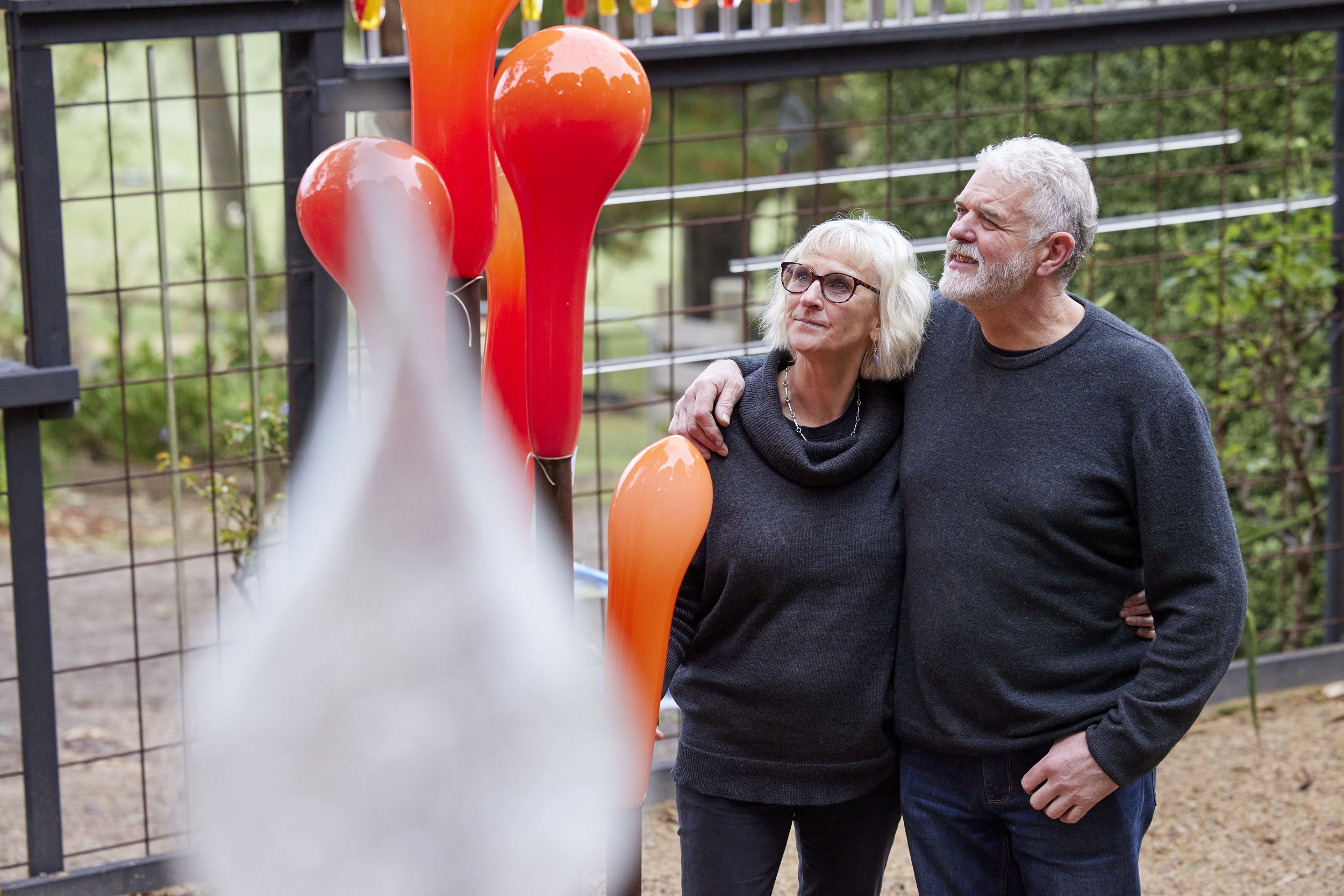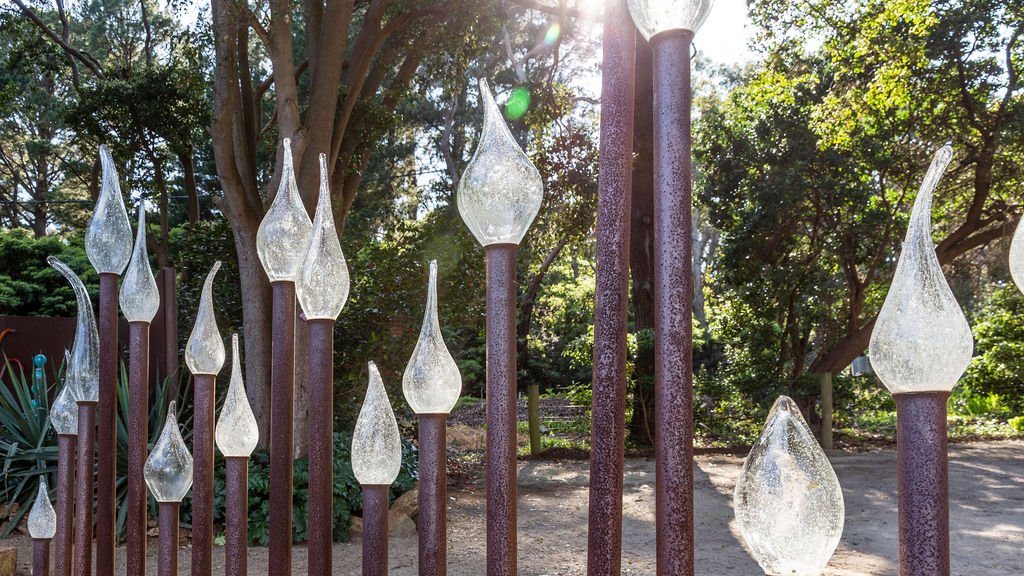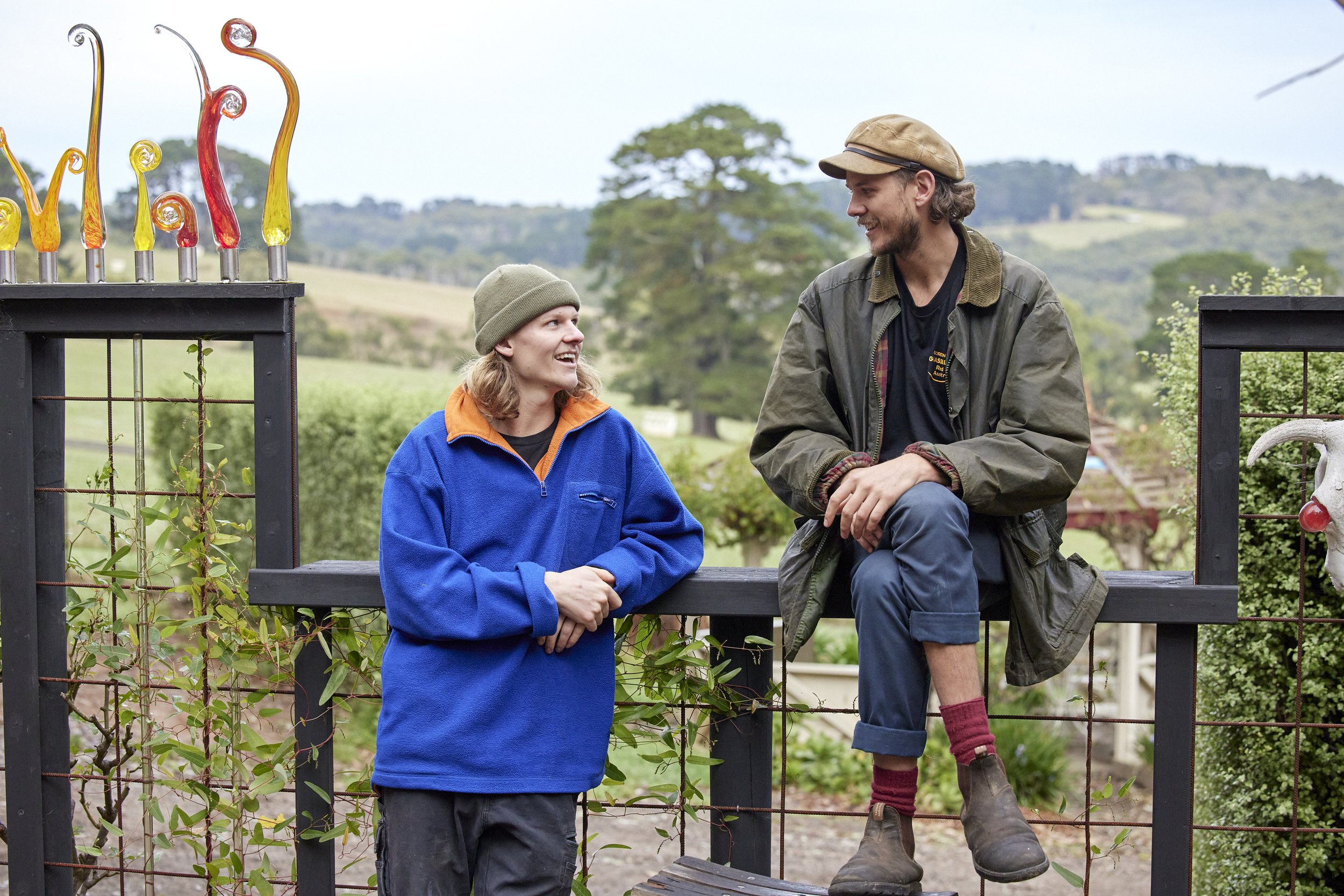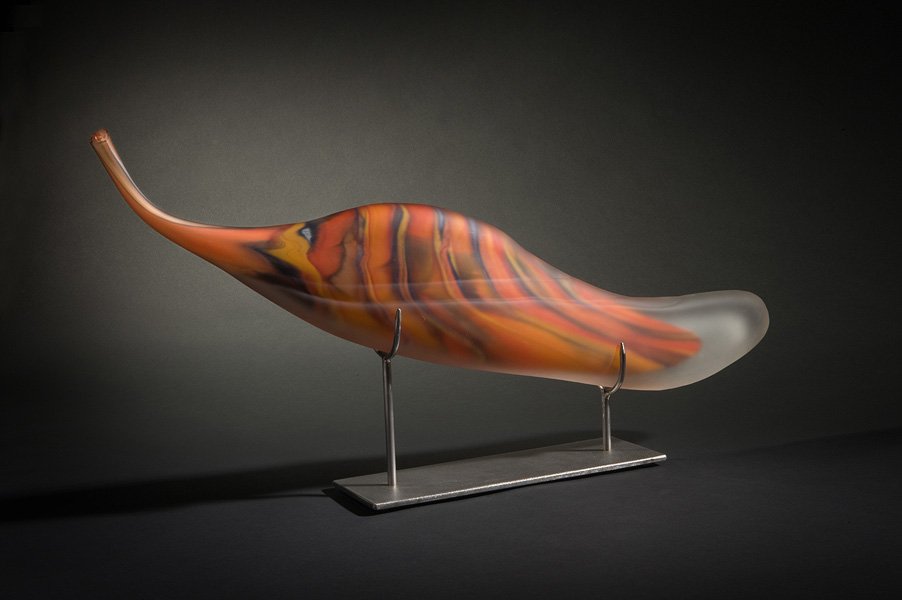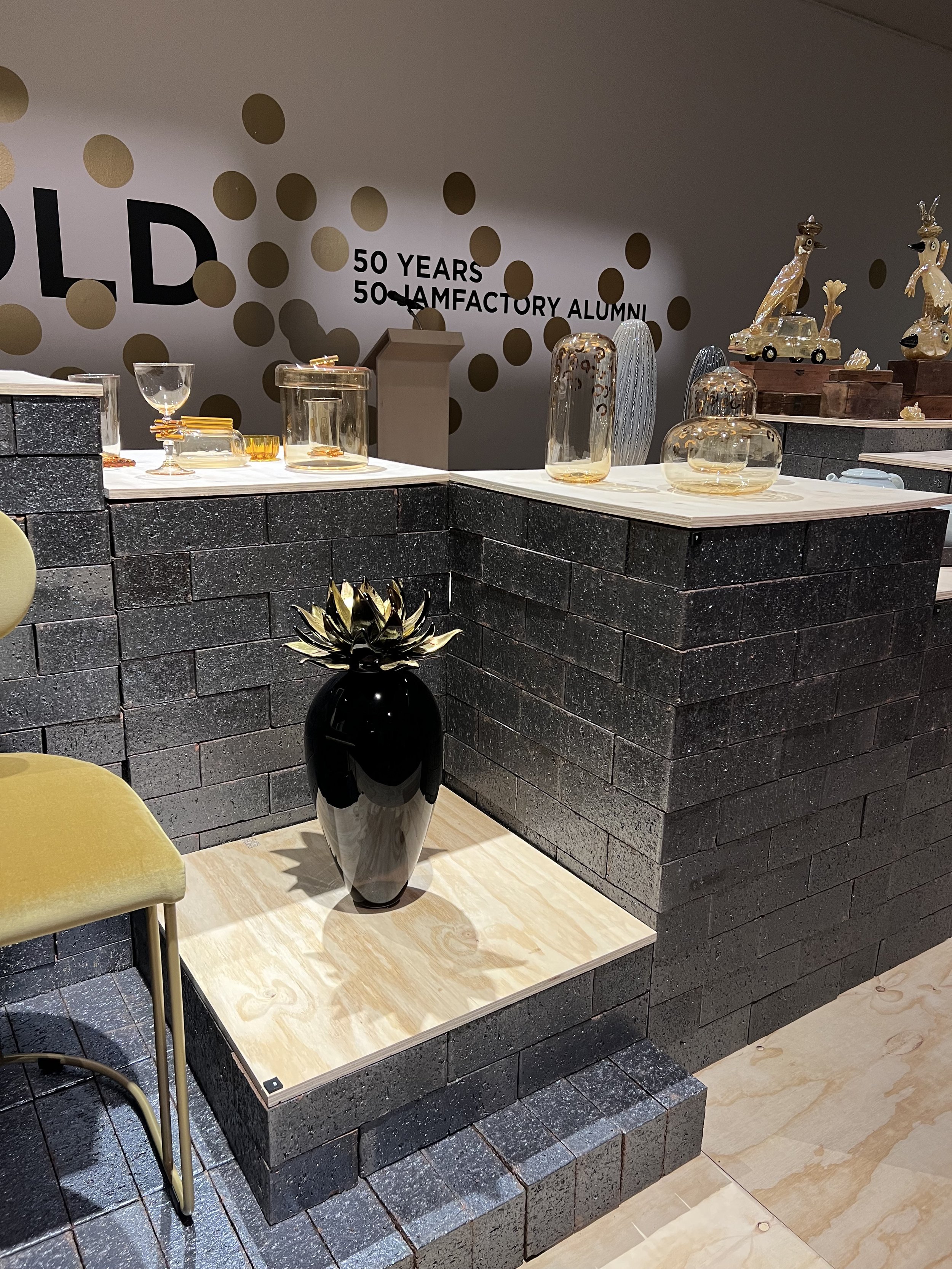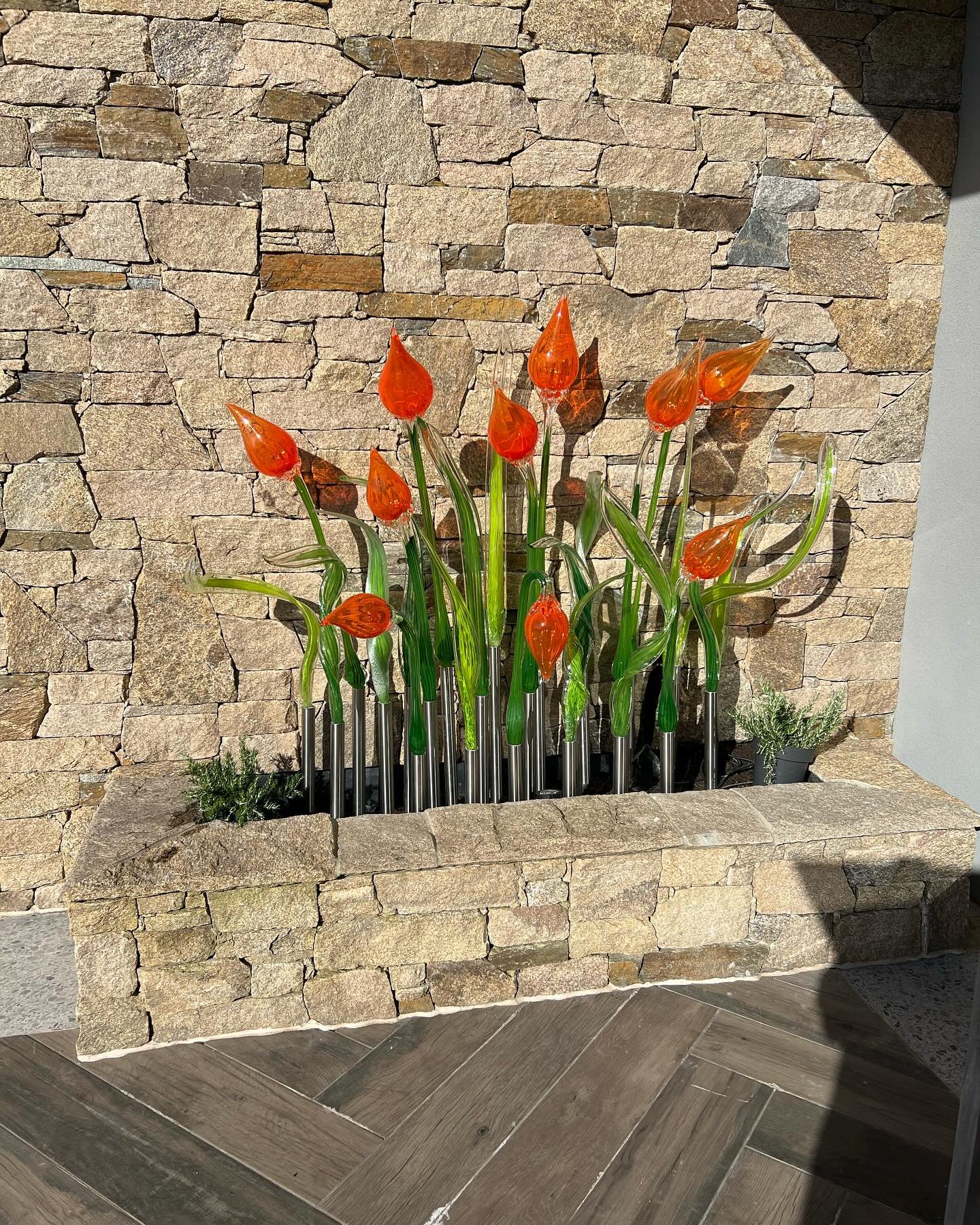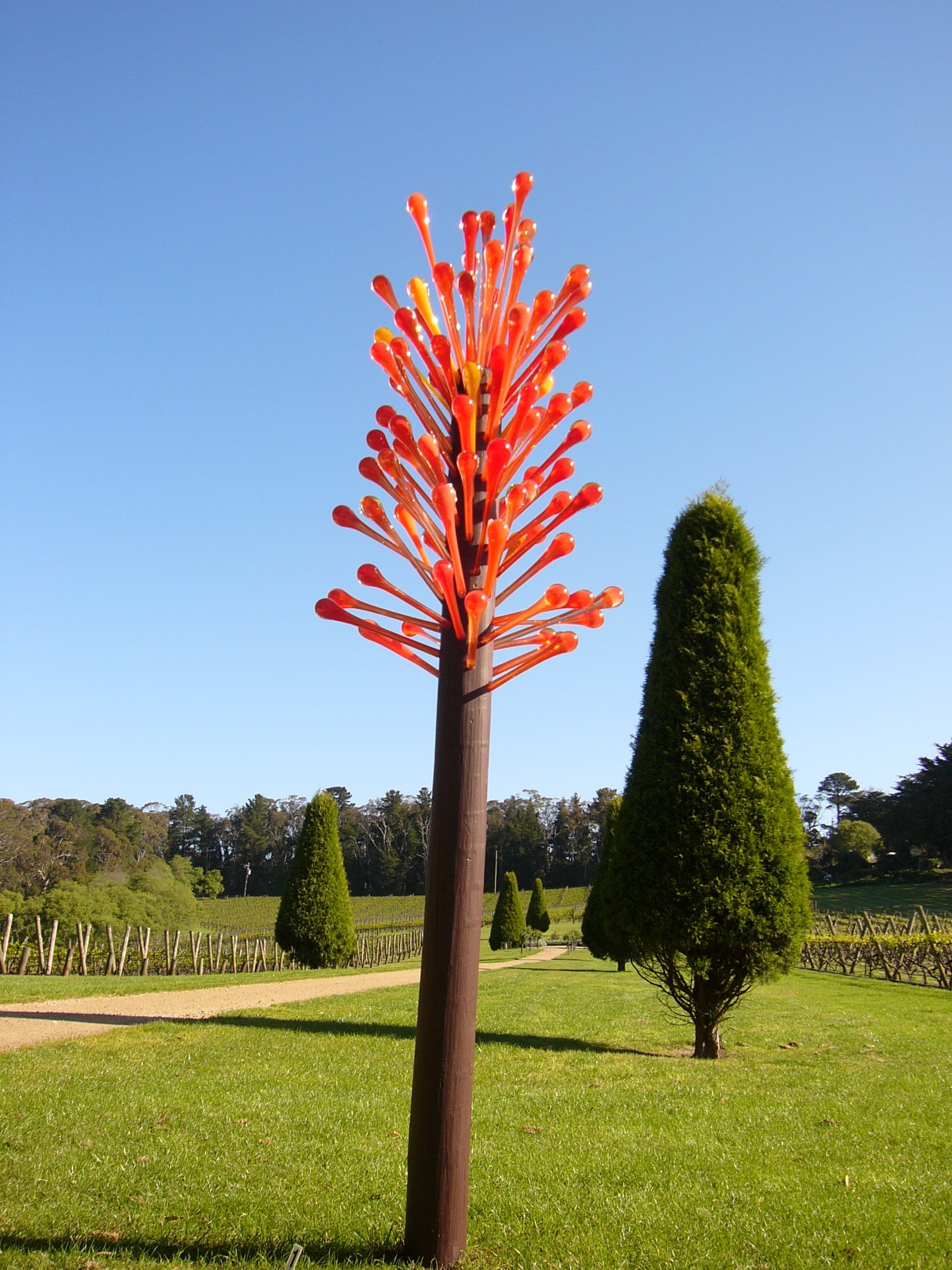What is a glass sculpture?
This 27th April unites the global art world through the medium of sculpture. International Sculpture Day builds awareness and education around sculpture and its integral impact on the global populace in capturing a moment in time and telling a narrative for decades – even centuries.
We'll be marking International Sculpture Day by blowing a glass sculpture across Friday 26th and Saturday 27th April – and you can come and watch from 10am.
Whether metal, wood, plastic, pottery or glass, sculpture is among the most expressive of physical, set art forms.
Sculpture plays a major part in our work. We push the boundaries of glass to create contemporary sculptures that incorporate metal work for both interior and exterior display. Sculptures showcase the beauty of glass and its ability to shift and change as it catches the natural light. These are statement pieces and convey emotions that are unique to glass. We look to colour and form for inspiration and use new and old techniques to create the final works.
We love working with others to bring creative thoughts and ideas to life. Here are some sculptures that have been sold, but we are able to recreate. Please don’t hesitate to contact us if you would like us to create a sculpture.
Glass sculpture
Like most mediums, sculpture in glass is very individual and personal. Unlike most mediums, glass is alive, fluid and morphs rapidly.
As with all artforms, sculpture-making is very individual and personal. No two creators of sculpture will ever make the same art. And no artist will ever make the same sculpture twice. These are all original thoughts coming to life.
Curated against a backdrop of rolling hills, the sculpture garden at the front of the Gordon Studio Gallery and Workshop encapsulates and celebrates art, nature, culture and individual identities through glass, colour and light.
What is glass sculpture?
“Every time I got up to blow a sculpture, I just thought to myself “what the hell am I doing?!”,” remembers Grant Donaldson.
“I had worked on a farm all my life where everything has a purpose. Sculptures are non-functional. They are designed to be looked at, admired and interpreted; not used.
“The art of sculpture is that it’s a piece of communication; explaining and capturing a message or a moment in time – however explicit or implicit. Whether people feel beauty, ambivalence or repulsion – or something in between – is completely subjective.
“Unless it’s a commissioned piece, the creation of sculpture is a selfish journey. We’re creating something very personal – until somebody else falls in love with the colours, light and form. Then we get to share the magic.”
“Of course, we want to tell a story that is relatable, but the personal journeys we are all on mean that our narrative will be different to everybody else's. Such is the beauty of life. And such is the beauty of art, glass and sculpture.
“But when you are blowing, you can’t be scared of what other people might think. You have to commit your deepest expression to the art. Glass can talk in a language that no other medium can. In a natural setting, the colour and the reflections are always changing in the way the glass catches the light.”
What does a glass sculpture look like?
“On a practical level, a glass sculpture can be small or big; stay inside or out, match dimensions or warp perspectives,” explains Eileen Gordon.
“People forget that you can put glass outside. Neither hailstone, rot, natural heat or direct sunlight will damage the art. It’s a lot cheaper than a garden renovation to lift an area, and it won’t get eaten like fish or frogs! Glass will outlast steel, timber, concrete and even stone. It’s beautiful in a natural, visual environment – not just in functional spaces.”
“It’s something to break up a landscape and focus your eyes on,” adds Grant.
“It might be a little out of the square, it might offset another feature – natural or otherwise. People might question, why is it there? Sculpture can catch curiosity by its very existence.”
“The artform can add colour to bland spaces or relate and communicate to other colours and natural or human-made features,” says Eileen.
“Such as plants or ponds.
“When you get up to start creating a sculpture, you don’t know exactly what you’re going to end up with – sometimes even with a commissioned piece”
Read here about why commissioned pieces will always be beautiful, but never “perfect”
“You can end up down rabbit holes and exploring different styles and techniques to try and breathe life into a vision,” explains Grant.
“That takes a lot of focus and mental energy – you can’t let your mind wander to what you’re going to do when you get home or what you’ll have for tea that evening! You can’t really brief anyone else on your vision either; the vision continues to materialise as you get deeper into the project.
“All of our minds are busy and cluttered – especially in today’s world. You have to clear the noise and keep an open and clear mind to feel deeply and express those feelings through glass.
Why sculpture?
So with all of this in mind, why do Grant, Eileen, Hamish and Calum work with studio glass to create sculpture? Why not stick to production pieces, platters, tumblers or vases?
“It’s the challenge,” says Grant.
“It’s so far removed from function that it’s very demanding, but incredibly rewarding. It’s almost like being able to express yourself in a different language. And it’s great for people who have run out of room in the house and want something significant. For people who are downsizing but will still have a garden, sculpture is an amazing way to enjoy art.
“There are no limits with sculpture. We’re not limited by material, kiln or imagination. Pieces can be created separated and adjoined – either with other materials (perhaps metals or other artforms) or using molten glass. It’s about opening our minds – we’re only limited by courage.
“We get to create far less than 1% of the millions of ideas and visions we have for sculptural glass – which is why each piece is so special.”

